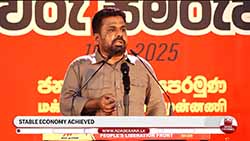Indian state offers menstrual leave to all working women
November 14, 2025 12:29 pm
The southern Indian state of Karnataka, which is also home to some of the world’s biggest IT firms, has become the first in the country to offer paid menstrual leave to all working women in formal jobs.
Under the new policy, women aged 18 to 52 working in government and private companies can take one day of menstrual leave every month, which cannot be carried forward. No medical certificate is required to avail the leave.
The policy covers 350,000 to 400,000 women in the formal sector, although it excludes a much larger cohort - estimated to be six million - who are engaged as domestic workers, daily-wage labourers, and gig workers in the unorganised sector.
Experts say the policy should extend to the informal sector.
But the state’s menstrual leave policy is still being regarded as significant for being the first to include the private sector, applying to workers regardless of job type or contract.
The concept of menstrual leave is not new. Countries like Spain, Japan, South Korea and Indonesia already offer menstrual leave. Some Indian states also offer limited menstrual leave: Bihar and Odisha give two days per month to government employees, while Kerala provides it to university and industrial training institute staff.
But in India, the move to give an extra day off to women sparks debate over potential gender bias and equality concerns.
Others argue it’s a necessary right, allowing women to avoid losing pay or working through unavoidable menstrual pain.
“This is one of the most progressive policy decisions for women that the government is implementing,’’ Santosh Lad, Karnataka’s labour minister, told the BBC.
An official from Nasscom - a non-profit trade association of the IT and BPO industries - told the BBC that many companies in Karnataka already provide menstrual leave, so implementing the government order wouldn’t be an issue.
Pratibha R, president of the local Garment and Textile Workers’ Union, welcomed the decision, noting that most female garment workers get barely 11 leave days a year.
However, some women feel that the policy will be hard to implement.
Menstruation remains taboo in many parts of India, with women often barred from temples or isolated at home as “unclean” during their periods.
“How can one go and seek menstrual leave when we don’t even speak about it [menstruation]? Our society has not reached that level,’’ Anunita Kundu, a manager at a software company, told the BBC.
Aruna Papireddy, another IT worker, said: “If you ask me, leave is not required. Women have reached high positions without even mentioning the M word.’’
Pushpendra, a social scientist who goes by one name, says the real challenge is battling the deep-seated stigma around menstruation.
“If a woman seeks two days’ leave in Bihar, it is understood that it is because of menstruation. It has facilitated women, but it has not empowered them.’’
He notes that in many parts of India - including Bihar, which has offered menstrual leave for decades - shopkeepers still wrap sanitary pads in old newspapers.
Efforts to de-stigmatise menstruation in the past have included empathy exercises for men in the neighbouring state of Kerala. Yet in 2018, protests erupted in the state against lifting the ban on menstruating women from visiting Sabarimala temple, one of the holiest shrines in southern India.
Some women in Karnataka say the government’s menstrual leave policy could make people more comfortable discussing menstruation.
“Calling it menstrual leave helps in fighting the stigma,” said Shreya Shree, a teacher based in Bengaluru city.
Sapna S, an associate dean at Christ University and head of Karnataka’s menstrual leave committee, urged women to take advantage of the policy.
“What is needed is an attack on the social conditioning that exists. Women should not be apologetic or shy to ask for menstrual leave,” she said.
Source: BBC
--Agencies












